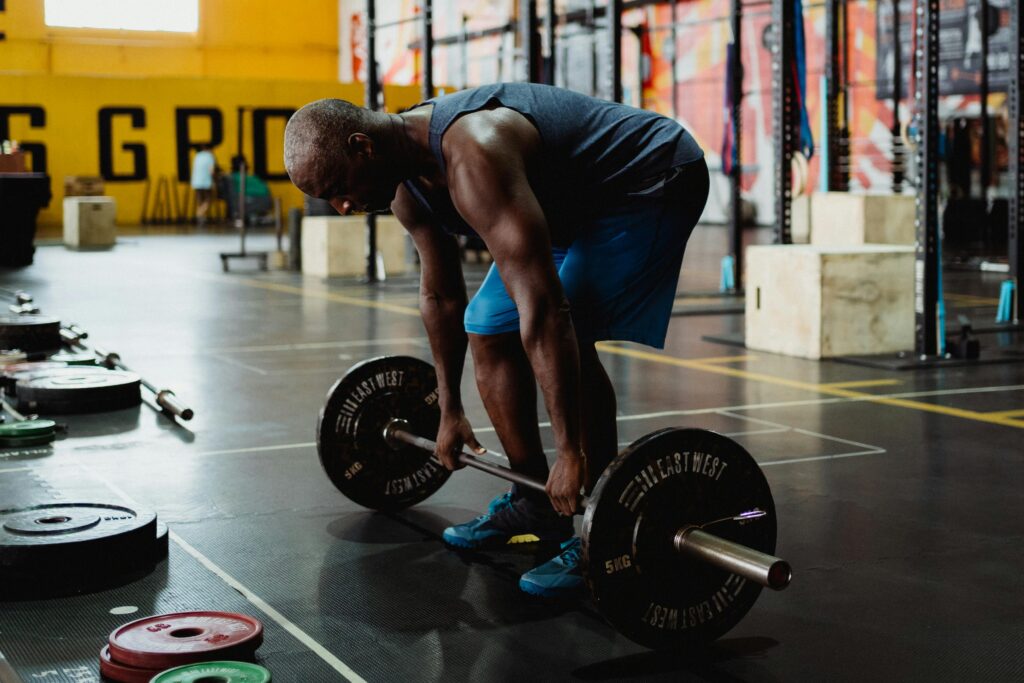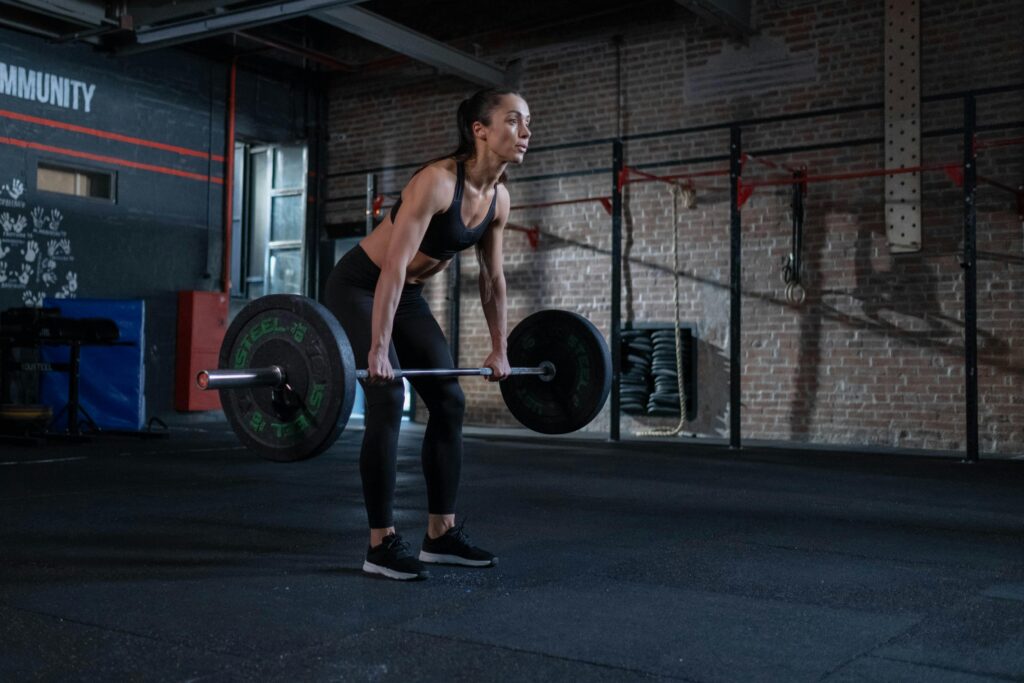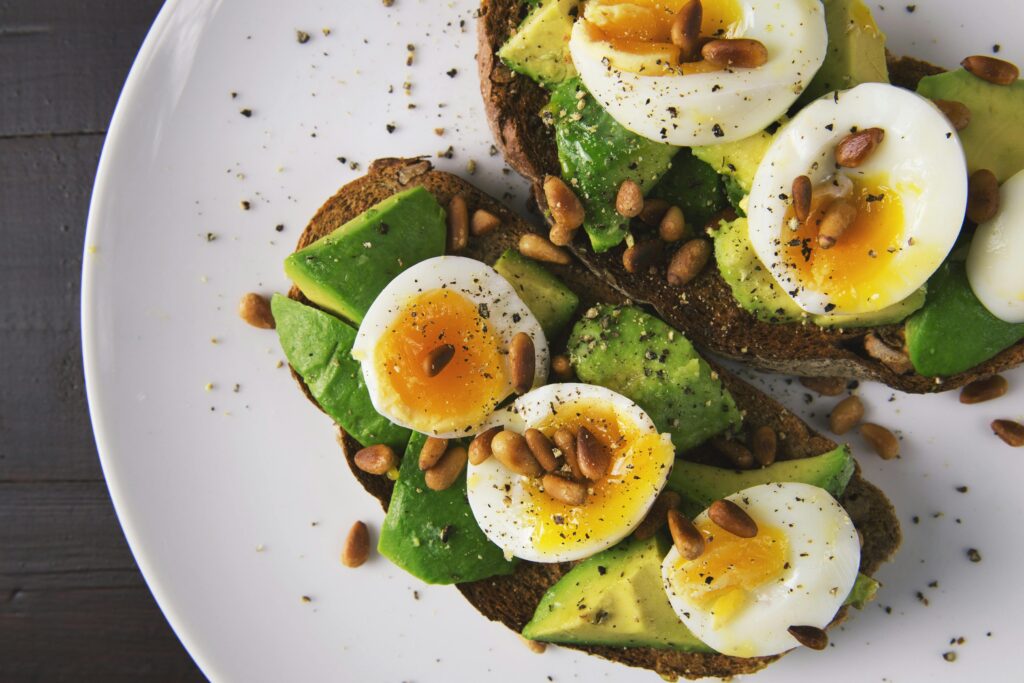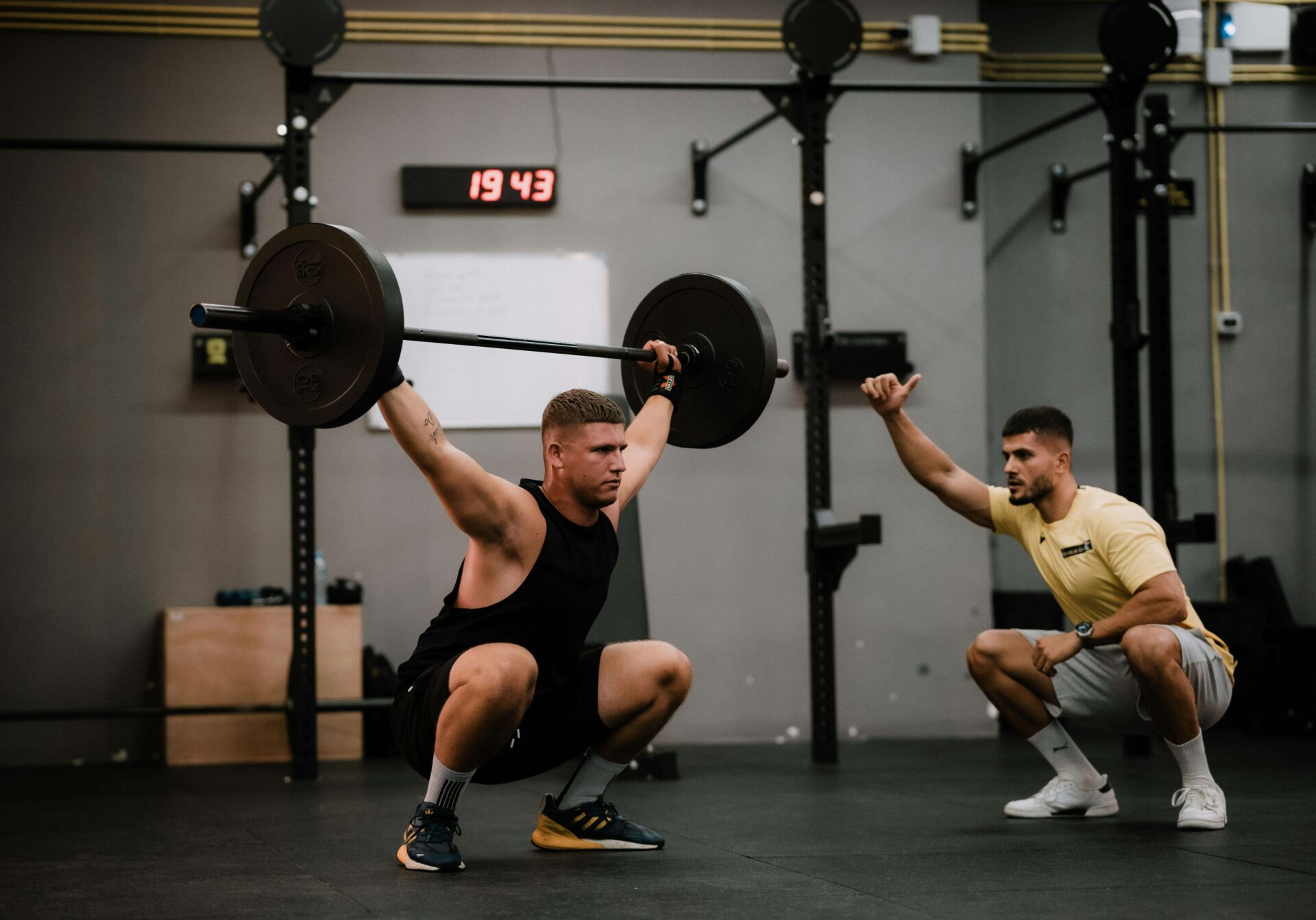You know that feeling. Standing there at the platform, chalk dust floating in the air, your heart pounding as you approach the bar. For Jessica, a 26-year-old physiotherapist who’d just hit a training plateau, this moment at her second powerlifting meet brought up all those familiar doubts about her program.
Let’s be real – if you’ve been powerlifting for a while, you’ve probably asked yourself: “Am I actually following the right program?” You’re not alone. About 68% of lifters who’ve moved past the beginner gains hit walls in their training because their programming just isn’t cutting it anymore.
This isn’t just about throwing more weight on the bar and hoping for the best. A powerlifting program that actually works needs to nail a few key things:
- Smart progression that keeps you getting stronger without burning out
- Technical work that makes your lifts more efficient (and yeah, that means more weight on the bar)
- The right mix of volume and intensity so you’re peaking when it matters
- Recovery strategies that keep you healthy while pushing your limits
Here’s what we’re gonna cover in this guide:
- Breaking down what makes a powerlifting program work (and why most don’t)
- How to build training that gets you stronger consistently
- Getting ready for meet day without losing your mind
- Keeping your body from falling apart while lifting heavy
- Making your technique rock solid under max weights
I’ve spent over 10 years coaching powerlifters, and I’m gonna share what actually works, backed by both science and real-world experience. No fancy theories that fall apart when the weights get heavy – just proven strategies that’ll help you break through plateaus and crush your next meet.
Understanding Powerlifting Program Fundamentals
Real talk: getting good at powerlifting isn’t just about copying what some elite lifter does on Instagram. Your program needs to be built on solid principles that actually make sense for where you’re at.
The Three Core Lifts: More Than Just Moving Weight
Let’s break down what really matters for each lift:
Squat
- Your stance width and bar position gotta match your body type – there’s no one-size-fits-all
- Bracing isn’t just taking a big breath – it’s about creating total-body tension
- Most lifters rush their setup, then wonder why their heavy sets feel shaky
Bench
- Leg drive isn’t optional – it’s literally leaving pounds on the platform if you’re not using it
- Your grip width changes everything about how the lift feels
- Upper back tightness makes or breaks your heavy attempts
Deadlift
- Hip height is individual – stop trying to copy someone else’s starting position
- The bar path matters more than most lifters think
- Setting up the same way every single time is huge for consistency

Volume vs. Intensity: Finding What Works For You
Here’s something nobody talks about enough: the sweet spot between volume and intensity is different for everyone. Some lifters can handle high-volume training with lots of sets, while others need less volume but can push the intensity higher.
A good way to find your sweet spot:
- Start with 3-4 working sets per lift
- Keep most of your work between 70-85% of your max
- Pay attention to how you recover
- Add volume or intensity gradually based on how your body responds
Frequency That Makes Sense
You don’t need to squat every day to get stronger. Here’s a reality check on training frequency:
- 2-3 times per week per lift is plenty for most lifters
- Recovery between sessions matters more than frequency
- Quality beats quantity every time
- Your work schedule and life stress count as training stress too
💡 Training Insight: Most lifters do better starting with moderate frequency and building up as needed, rather than jumping into high-frequency training and burning out.
Building Your Optimal Training Structure
You’ve probably seen those cookie-cutter programs online that promise crazy strength gains. But here’s the thing – programming needs to fit your life, not the other way around. Let’s look at what actually works.
Weekly Programming Templates
Here’s a sample structure that works for a lot of lifters who have jobs and lives outside the gym:
Monday: Competition Squat + Bench Assistance
Wednesday: Competition Bench + Deadlift Assistance
Friday: Competition Deadlift + Squat Assistance
Saturday: Technique Work + Accessories
The magic isn’t in the split – it’s in how you organize the work within each session.
Progressive Overload That Actually Makes Sense
Forget about adding 5 pounds every week – that stops working pretty quick. Here’s what smart progression looks like:
- Week 1-3: Build volume with submaximal weights (70-80%)
- Week 4-6: Start pushing intensity (80-90%)
- Week 7-9: Peak intensity (85-95%)
- Week 10: Deload and test
Remember: Sometimes progression means better technique or more reps at the same weight. Not every session needs a PR.

Deload Done Right
Most lifters mess up deloads in one of two ways:
- They skip them completely
- They drop the weight too much and lose momentum
Here’s a better approach:
- Keep the intensity (weight on the bar)
- Cut the volume (sets and reps) by 40-50%
- Still hit some heavy singles, but way fewer than normal
- Use the extra time for technique work
⭐ Pro Tip: Plan your deloads before you need them. Don’t wait until you’re beat up and struggling.
Sample Deload Week:
| Lift | Normal Week | Deload Week |
| Squat | 5×5 @ 80% | 2×3 @ 80% |
| Bench | 5×5 @ 80% | 2×3 @ 80% |
| Deadlift | 4×4 @ 80% | 2×2 @ 80% |
Competition Peak Programming
Listen, peaking for a meet isn’t rocket science, but it’s where a lot of lifters mess up. They either try to get too fancy or don’t plan enough. Let’s fix that.
Meet Preparation Timeline
Your last heavy day should be about 10-14 days out from the meet. Here’s how to break it down:
4 Weeks Out:
- Still hitting good volume
- Working up to 85-90% on main lifts
- Testing openers if you haven’t yet
3 Weeks Out:
- Start reducing volume
- Keep intensity high
- Last heavy doubles and triples
2 Weeks Out:
- Heavy singles only
- Pick your attempts
- Cut assistance work by half
Final Week:
- Light technique work
- No grinding reps
- Last session 3-4 days before meet
- Focus on making weight and resting
Tapering Strategies That Work
Here’s what a lot of lifters get wrong – they stop lifting completely a week out and feel weird on meet day. Instead:
- Keep practicing your technique
- Drop the volume, not the intensity
- Move fast and crisp with lighter weights
- Don’t try anything new
Picking Attempts That Make Sense
Your attempts should follow a simple plan:
First Attempt:
- Something you could hit for a triple when tired
- Usually around 90% of your max
- A weight you’ve hit perfectly at least 5 times recently
Second Attempt:
- A weight you’ve hit cleanly as a single
- Usually your gym PR or just below
- Should feel confident about this one
Third Attempt:
- Based on how first two moves
- Small PR if everything feels good
- Match your PR if things feel off
⭐ Pro Tip: Write down your attempts AND your backups. Meet day rarely goes exactly as planned.
Recovery and Injury Prevention
Let’s talk about something that ain’t sexy but keeps you in the game – recovery. Every lifter loves training hard, but staying healthy enough to keep training? That’s what separates the ones who make it from the ones who don’t.
Don’t just sit on your couch between sessions. Here’s what actually helps:
- 10-15 minutes of light movement daily
- Band work for your shoulders and hips
- Walking (yeah, seriously – it works)
- Light technique practice with 40-50%
Smart Movement Screening
Before you load up the bar, check these boxes:
- Can you hit depth in your squat with just bodyweight?
- Is your bench setup tight without any weight?
- Can you hinge properly for deadlifts?
If something feels off, fix it before adding weight. Here’s a quick check you can do before every session:
Pre-training Movement Check:
1. Bodyweight squat x 5
2. Push-up x 5
3. Hip hinge x 5
Managing Training Stress
This ain’t just about the gym. Your body doesn’t know the difference between:
- Work stress
- Training stress
- Life stress
- Bad sleep
Track these things in your training log:
- Sleep quality
- Stress level
- Appetite
- Motivation to train
When two or more are off, that’s your signal to back off a bit.
Nutrition and Supplementation for Powerlifting
Food ain’t just fuel – it’s your secret weapon for recovery and performance. Let’s break down what actually matters without getting lost in the weeds.
Meal Timing Around Training
Here’s what works for most lifters:
Pre-Training:
- 2-3 hours before: Real meal with protein and carbs
- 30 mins before: Light snack if hungry
- Skip the pre-workout if you can’t sleep after training
During Training:
- Water (obviously)
- Intra-workout carbs only if sessions go over 2 hours
- Salt tabs if you sweat a lot
Post-Training:
- Within an hour: 30-40g protein
- Add carbs based on your next session
- Real food beats supplements
Daily Food Requirements
Your body needs fuel to move big weights. Here’s the simple version:
- Protein: 1.8-2.2g per kg bodyweight
- Carbs: 4-6g per kg for most lifters
- Fats: 0.8-1g per kg minimum

⭐ Pro Tip: Track your food for a week. Most lifters eat way less protein than they think.
Meet Day Nutrition
Don’t mess this up – meet day isn’t the time to try new things.
Morning Of:
- Familiar breakfast
- Easy to digest carbs
- Nothing new or weird
During Meet:
- Small snacks between attempts
- Clear liquids
- Simple sugars for quick energy
What to Pack:
- PB&J sandwiches
- Banana or fruit
- Gatorade or similar
- Protein bars you’ve tried before
Remember: You’re not trying to win a bodybuilding show. Focus on foods that give you energy and don’t upset your stomach.
Putting It All Together
Look, you’ve got all the pieces now. But knowing what to do and actually doing it are different things. Here’s your action plan:
Step-by-Step Implementation
- Start with this basic training plan:
Week 1: Test your current maxes
Week 2-4: Base building
Week 5-7: Push volume
Week 8-10: Intensity focus
Week 11: Deload and retest
- Track everything:
- Main lift numbers
- Recovery markers
- Food intake
- Sleep quality
- Adjust based on your results:
- Keep what works
- Change what doesn’t
- Be patient with progress
Success Tips From Real Lifters
“I stopped trying to max out every session and started following actual progression. My total went up 45kg in 6 months.” – Jess W., 84kg lifter
“The game-changer was fixing my technique before going heavy. Seems obvious now.” – Mike R., 93kg lifter
Next Steps
Ready to take your lifting to the next level?
- Join our powerlifting team
- Get personalized coaching
- Come to our technique workshops
- Follow us on social for daily tips
💪 Remember: The best powerlifting program is the one you’ll actually follow. Start with these basics, be consistent, and watch your numbers climb.
Questions? Hit us up. We’re here to help you get stronger.



